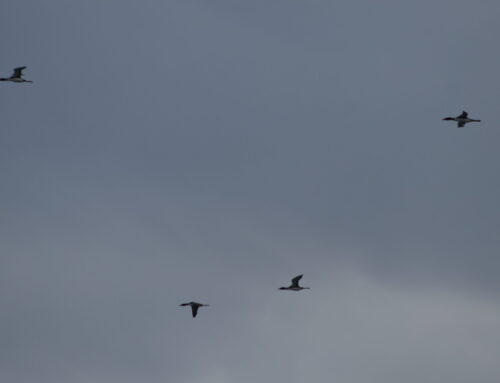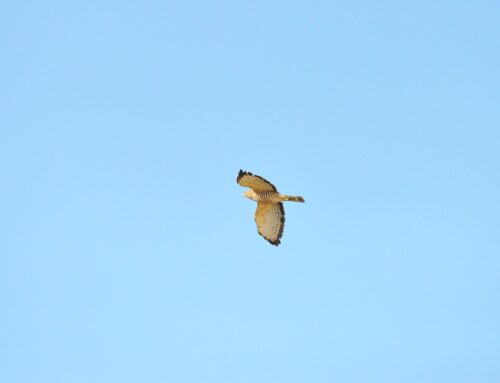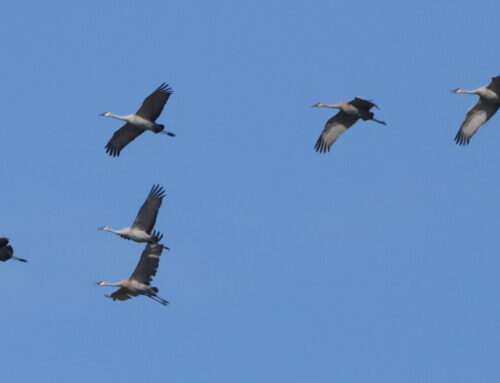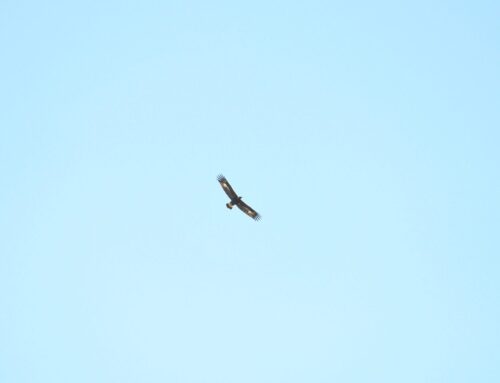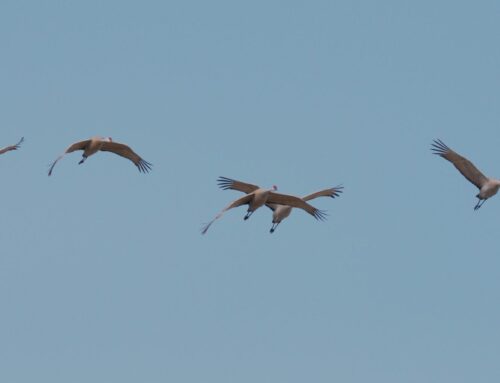The season is just past halfway through, the weather has certainly changed, and with it so has the diversity of migrants being seen on the WPBO waterbird count. Perhaps the biggest constant this season has been the Red-necked Grebes. Though their peak day of 2,954 was well over a month ago they haven’t stopped yet, and in the first week of October over 500 have flown by. And while they’re no longer the predominant waterbird on any given day, Red-necked Grebes still retain the title of most common bird for the count, with 9,545, good for 19% of the 49,273 birds tallied this fall.
Canada Goose is currently the second-most common bird for the count, at 6,129, placing the species well above the average since 1989 of 4,474. Surprisingly, the next place belongs to Common Tern, the last of which was seen on September 27. In fact, with a total of 4,981 counted, this season has set a new record total for Common Tern.
Ducks have been putting on a nice show on and off lately. October 6th has been the best day yet for all three scoters, with 109 White-winged leading the way, while Surf Scoter totaled 78 and Black 12, with an additional 20 unidentified dark-winged scoters. Many more scoters are sure to be seen in the following weeks, as we’re just entering the beginning of their peak season. Waves of Aythya ducks have begun, with a combined total to date of exactly 5,600. Common Goldeneye and Long-tailed Duck will become quite common in the second half of the count, but currently stand at just 8 and 13, respectively.
While the divers have firmly taken over the flights lately, dabblers certainly aren’t done. Gadwall, American Wigeon, Mallard, Northern Pintail, and Green-winged Teal all migrated past the point this weekend, and Mallard had a new peak day on the 7th with a total of 47. Loons continue to trickle by, with Common currently totaling 1,995, and Red-throated 361.
Jaegers have been unremarkable so far, with five identified individuals, all Parasitic, and eight unidentified. Gulls remained at just three species — Bonaparte’s, Ring-billed, and Herring — until October 3rd, when a lone Great-black Backed was recorded.
Shorebird diversity has also changes noticeably over the course of the season. Lately American Golden and Black-bellied Plovers have been hanging around, along with a nice flock of 17 Pectoral Sandpipers on the 7th. Sanderling, Dunlin, Greater Yellowlegs, and a Baird’s Sandpiper rounded out the shorebird totals over the last weekend.
As always, there’s far more going on than can fit into a single blog post, so head to Dunkadoo for the full-season totals and live updates throughout the count each day!
Gary Palmer
WPBO Fall Waterbird Counter



